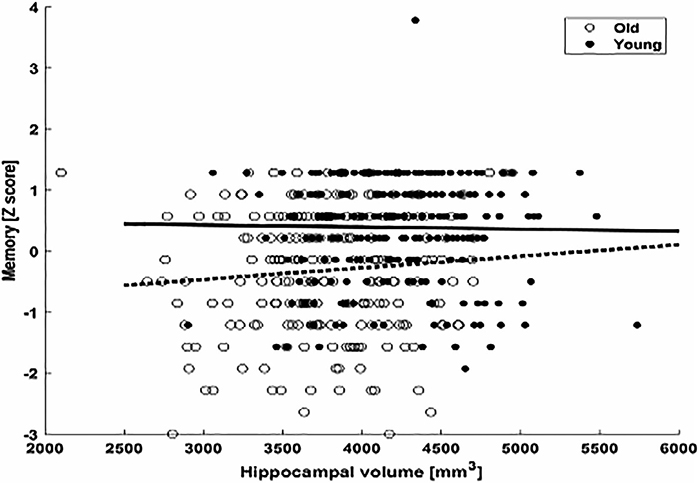Columbia University
Irving Medical Center
Neurological Institute
710 West 168th Street, 3rd floor
(212) 305-1818
TaubCONNECT Research Perspectives:
May 2019
2: » Brain Biomarkers and Cognition Across Adulthood
» #2 Brain Arterial Dilatation and the Risk of Alzheimer's Disease
» #1 Elevated Cellular Cholesterol in Familial Alzheimer's Presenilin 1 Mutation is Associated with Lipid Raft Localization of β-Amyloid Precursor Protein
» #2 FDG-PET Patterns Associated with Underlying Pathology in Corticobasal Syndrome
» #1 Effect of Aerobic Exercise on Cognition in Younger Adults: A Randomized Clinical Trial
» #1 A Tau Homeostasis Signature Is Linked with the Cellular and Regional Vulnerability of Excitatory Neurons to Tau Pathology
» #2 Between-network Functional Connectivity Is Modified by Age and Cognitive Task Domain
» #2 Semantic Network Function Captured by Word Frequency in Nondemented APOE ε4 Carriers
» First Place: NSUN2 is Dysregulated in Alzheimer's Disease
» #1 Homeostatic Plasticity Scales Dendritic Spine Volumes and Changes the Threshold and Specificity of Hebbian Plasticity
» #2 An MRI Measure of Degenerative and Cerebrovascular Pathology in Alzheimer Disease
» #1 A Multi-Omic Atlas of the Human Frontal Cortex for Aging and Alzheimer's Disease Research
» #2 Whole-exome Sequencing in 20,197 Persons for Rare Variants in Alzheimer's Disease
» #2 Preparation of Tau Oligomers After the Protein Extraction from Bacteria and Brain Cortices
» #2 Medical Retirement from Sport after Concussions: A Practical Guide for a Difficult Discussion
» #1 Cross Domain Self-Monitoring in Anosognosia for Memory Loss in Alzheimer's Disease
» #2 White Matter Changes in Alzheimer's Disease: A Focus on Myelin and Oligodendrocytes
» #1 ZCCHC17 is a Master Regulator of Synaptic Gene Expression in Alzheimer's Disease
» #2 Imaging Translocator Protein as a Biomarker of Neuroinflammation in Dementia
» #3 A Transcriptomic Atlas of Aged Human Microglia
» #1 Neuronal Lysosomal Dysfunction Releases Exosomes Harboring APP C-terminal Fragments and Unique Lipid Signatures
Association of Variants in PINX1 and TREM2 With Late-Onset Alzheimer Disease
 |  | |
| Giuseppe Tosto, MD, PhD | Richard Mayeux, MD, MSc |
Late-onset Alzheimer disease (LOAD) is the most common form of dementia. Accumulating evidence supports a strong genetic causative mechanism, however, the ability to detect and confirm rare variants is limited because of low frequency. Whole-genome (WGS) and whole-exome sequencing (WES) can improve our understanding of LOAD genetic mechanisms and provide initial steps to identify potential therapeutic targets. LOAD frequency varies across populations and rare variants tend to be ethnicity specific; consequently, lack of diversity in genetic studies can be a potential source of bias. To overcome this limitation, first author Dr. Giuseppe Tosto and senior author Dr. Richard Mayeux, along with colleagues from Taub and Neurology used WES and WGS data from 15,030 participants across three case-control studies—the multiethnic WHICAP cohort, and the ADSP and ROSMAP studies—to conduct the largest gene-based, transethnic meta-analysis of sequencing data in LOAD, to date.
 Figure 4. Abbreviations: ADSP, The Alzheimer Disease Sequencing Project; ROSMAP, the
Religious Orders Study and Memory and Aging Project; SKAT-O, (Sequence)
Kernel Association Test–Optimal; WHICAP,Washington Heights, Hamilton
Heights, Inwood Community Aging Project.
a Model 1 was adjusted for sex, age, and principal components. Model 2 was adjusted for sex, age, APOE-ε4 allele, and principal components. The stated number of variants indicates the number of single-nucleotide variants and indels included in each cohort. b P values that passed the gene-wide significance thresholds. |
As published recently in JAMA Neurology, they identified PINX1, a gene involved in telomere integrity, and TREM2, a gene with a product of an immune receptor found in microglia, as associated with LOAD. Both genes have well-established roles in aging and neurodegeneration. Importantly, PINX1 was replicated in the two distinct data sets of different ethnicity (Caribbean Hispanic families and non-Hispanic white individuals). Taken together, these results indicate that PINX1 is associated with LOAD across ethnic groups. However, the mechanisms underlying its putative role need to be established.
Giuseppe Tosto, MD, PhD
Postdoctoral Research Scientist (in the Taub Institute and the Gertrude H. Sergievsky Center)
gt2260@cumc.columbia.edu
Richard Mayeux, MD, MSc
Gertrude H. Sergievsky Professor of Neurology, Psychiatry and Epidemiology (in the Gertrude H. Sergievsky Center and in the Taub Institute)
rpm2@cumc.columbia.edu
Brain Biomarkers and Cognition Across Adulthood
 |  | |
| Angeliki Tsapanou, PhD | Yaakov Stern, PhD |
Although relationships between indices of brain and cognition have been examined in aging, the relative relationships of different brain biomarkers (BMs) and cognitive functions across age remain relatively unexplored. Examining the associations between multiple BMs and cognition across adulthood in cognitively normal adults can aid the understanding of the mechanisms underlying cognitive function in aging, before a neurodegeneration or a general pathology appears.
To this end, a new study by first author Dr. Angeliki Tsapanou, senior author Dr. Yaakov Stern, and colleagues from Taub and Neurology aimed to examine the associations between BMs and cognition across the adult life span. In a large sample (n=562) of cognitively normal participants aged 19-80 years old from the Reference Ability Neural Network (RANN) and the Cognitive Reserve (CR) studies, associations for nine specific brain measurements—cortical, entorhinal, and parahippocampal thickness, hippocampal and striatal volume, default-mode network and fronto-parietal control network, fractional anisotropy (FA), and white matter hyperintensity (WMH)—were examined. In addition, extensive neuropsychological testing was performed to assess three cognitive domains: episodic memory, executive function, and speed of processing. Adjustments were made for age, sex, education, intracranial volume, and then, further, for general cognition and motion.

Figure 4: Scatterplot for the interaction effect between hippocampal volume and age on episodic memory, in total sample with a median split age of 60 years old.
As published in Human Brain Mapping, results from Tsapanou et al. show that unique sets of BMs can explain variation in specific cognitive domains across adulthood. There was also a significant interaction between hippocampal volume and age in memory (see figure 4). In age-stratified analyses, the most significant associations for the young group occurred between FA and executive, WMH and memory, while for the old group, between entorhinal thickness and speed, and WMH and speed, executive function. Such results provide essential information about the neurobiology of aging.
Angeliki Tsapanou, PhD
Postdoctoral Research Scientist in the Taub Institute
at2859@cumc.columbia.edu
Yaakov Stern, PhD
Professor of Neuropsychology (in Neurology, in Psychiatry, in the Gertrude H. Sergievsky Center, and in the Taub Institute)
ys11@cumc.columbia.edu

